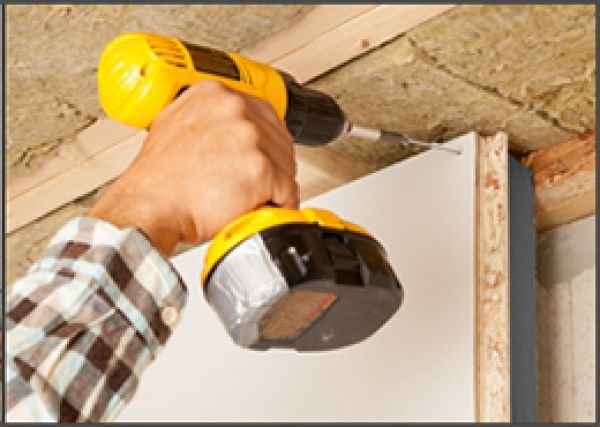Dry-Lining Fixing – Level 2
About this course
Dry-Lining Fixing – Level 2
Course Overview
This Level 2 course is designed to provide learners with the skills and knowledge required to install plasterboard (dry-lining) to walls, ceilings, and partitions in commercial and residential buildings. The course covers industry best practices, health and safety regulations, and practical techniques for achieving high-quality finishes.
Course Duration:
Typically 4–6 weeks (depending on delivery mode)
Combination of theory and hands-on practical training
Entry Requirements:
Basic construction knowledge (Level 1 or relevant experience preferred)
Interest in pursuing a career in dry-lining or interior systems
Course Modules
1. Introduction to Dry-Lining
Definition and applications of dry-lining
Advantages over traditional wet plastering
Types of plasterboard (standard, moisture-resistant, fire-resistant, acoustic)
2. Tools and Materials
Essential tools (tape measure, spirit level, utility knife, screw gun, etc.)
Fixings and adhesives (dot & dab, screws, metal framing)
Insulation and soundproofing materials
3. Health and Safety in Dry-Lining
Risk assessments and method statements
Personal Protective Equipment (PPE)
Handling and storing materials safely
Working at heights (scaffolding, hop-ups)
4. Measuring and Cutting Plasterboard
Accurate measuring techniques
Cutting methods (straight cuts, curves, openings for sockets)
Minimising waste
5. Fixing Methods
Dot & Dab (Dry Adhesive Fixing)
Surface preparation
Mixing and applying adhesive
Board positioning and alignment
Metal Framing Systems
Installing metal stud partitions
Fixing plasterboard to metal frames
Timber Battens
Fixing plasterboard to timber frameworks
6. Jointing and Finishing
Applying scrim tape to joints
Filling and sanding techniques
Beading for external corners
Achieving a smooth finish ready for decoration
7. Installing Insulation and Soundproofing
Types of insulation (PIR, mineral wool, foam boards)
Correct installation methods
Enhancing acoustic performance
8. Repairing and Modifying Dry-Lining
Patching damaged plasterboard
Cutting access panels
Modifying existing installations
9. Practical Assessments
Hands-on workshops (fixing boards, jointing, finishing)
Simulated project work (building a partition wall)
10. Industry Standards and Career Pathways
Compliance with building regulations
Quality control and best practices
Career opportunities (dry-liner, ceiling fixer, interior systems installer)
Assessment & Certification
Practical assessments (observed tasks)
Multiple-choice tests (theory knowledge)
Final project (complete a dry-lined partition)
Award: Level 2 Certificate in Dry-Lining Fixing (accredited by a recognised awarding body)
Comments (0)
Dry-lining is a construction method where plasterboard (or drywall) is attached to walls or ceilings to create a smooth, even surface. It's an alternative to traditional plastering, offering a faster and often more cost-effective way to prepare interior walls and ceilings for decoration.
Dry lining, also known as drywall installation, involves applying plasterboard to walls and ceilings. Essential tools include cutting tools like a drywall saw or utility knife, measuring tools like a tape measure and spirit level, fixing tools such as a screw gun, and finishing tools for jointing and sanding. Materials include plasterboard, drywall screws, jointing compound, and potentially metal studs and track.
Health and safety in dry-lining involves protecting workers from hazards like dust, falls, and equipment-related risks. It includes implementing training programs, adhering to industry standards, and continuously improving safety protocols. Key aspects include proper use of personal protective equipment (PPE) like safety goggles and dust masks, as well as risk assessments and emergency response procedures.
To measure and cut plasterboard for drylining, first measure the area where the plasterboard will be installed with a tape measure. Then, transfer those measurements to the plasterboard sheet using a pencil and straight edge. For straight cuts, use a utility knife to score the plasterboard along the marked line, then snap the board along the score line and finish the cut with a plasterboard saw or utility knife. For curved or shaped cuts, use a saw or multi-tool to make an initial plunge cut and then carefully saw around the shape. Smooth any rough edges with a rasp.
In drylining, several methods are used to fix plasterboard to a wall, including "dot and dab", tacking, and screwing. "Dot and dab" involves applying adhesive dabs to the wall and pressing the plasterboard onto them. Tacking uses nails to secure the plasterboard to metal or timber walls. Screwing, which is generally considered the preferred method, uses screws to attach the plasterboard. Additionally, plastic toggles and hollow wall anchors can be used for securing heavy items to drylined walls.
In dry lining, jointing and finishing is the process of preparing the edges of plasterboard panels for a smooth, paint-ready surface. This involves applying joint compound and tape to the joints between panels and filling in areas where screws or other fixings are used. The process ensures a seamless finish, making the dry-lined walls and ceilings ready for decoration.
Installing insulation for soundproofing involves using materials that absorb sound and reduce its transmission through walls, floors, and ceilings. Thicker, high-density materials like fiberglass or cellulose insulation are generally more effective for soundproofing. Additionally, sealing gaps and cracks, adding mass to walls, and using resilient channels can enhance sound insulation.
A practical assessment evaluates a student's ability to apply knowledge and skills in a real-world or simulated environment. It goes beyond theoretical understanding and focuses on hands-on performance, often involving tasks, projects, or demonstrations. These assessments can be used to verify various skills, such as store procedures, sales techniques, or safe operation of machinery
Industry standards are the rules, practices, and expectations that define how businesses and individuals within a particular industry operate and perform their work. Career pathways, on the other hand, are structured routes that outline the steps individuals can take to advance their careers within an industry, often including education, training, and experience requirements.





